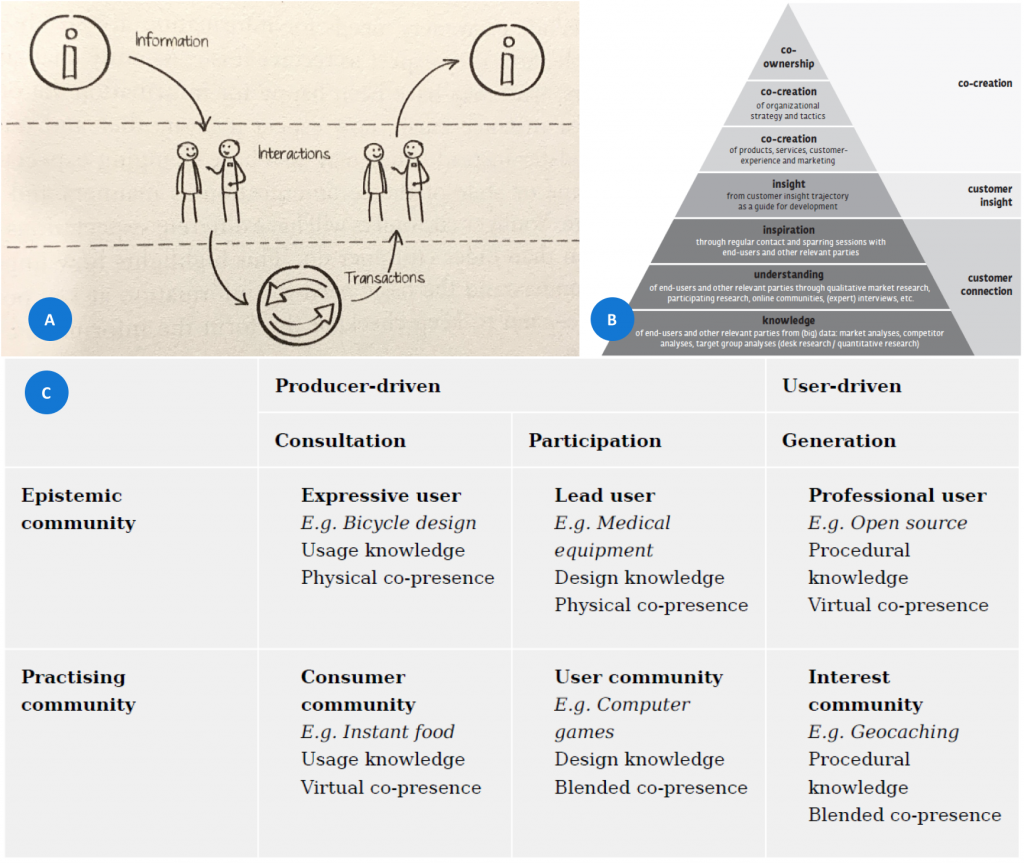(This series of posts is based on my literature review – ask me for sources in the comments.)
If ‘Drivers‘ tell you why you should adapt co-creation, then ‘Mindset’ is the collection of things you accept when you do adapt it. Basically: a more equal and reciprocal relationship with your customers, a redistribution of power.
A philosophy that accepts that customers are not only aware of their needs, but often have good ideas about how they can be met. Companies need to recognize new roles of these new high-achieving customers, even their involvement in decision making and strategy (that’s music to my ears). A 15-year old, but striking idea is the customer-to-business-to-customer (C2B2C) way of thinking. Customers should be continuously involved, in every step of the service process, to attain value not only from the service outcome, but the co-creation process itself.
It is a returning theme that adapting co-creation requires ongoing organizational change from the previous paradigm. Balancing between customer and business needs, and finding right amount of transparency and participation will be a big task – so big, that without commitment of senior leadership or CEO it might be impossible. The promise is that what the company risks with openness and transparency, it gains back- because participating customers become a new source of sustainable competitive advantage. Companies also need to accept that emotions will be just as much part of the transformation as knowledge and logic.
There is also some contradiction among writers, as multiple publications argue that co-creation means neither group decision, nor complete transparency, nor doing everything customers ask – rather collecting, filtering, prioritize, refining ideas that are attained from customers.
But what I liked most about mindset was what I call the depth of customer involvement in co-creation. This has been explored only relatively recently, and always as 3 layers. One publication talks about information, interaction and transaction. Another talks about consultation, participation, and generation – this latter being led by the customers. And a third publication identified depth in more granularity, but still categorized into 3 layers of connection, insight and co-creation (nomenclature is questionable):

This ‘depth’ concept illustrates well that customer relationship starts just superficial connection, but can become more interactive and insightful, and even really immersive. In my opinion this ‘depth’ view should be combined with the service phases view. That would allow senior executives to position the areas of co-creation they want to focus on (spoiler alert: I did combine these, see a later post.)





















[…] […]
[…] mentioned in an earlier post, some authors have suggested a view on the depth of co-creation. I find this an extremely important […]